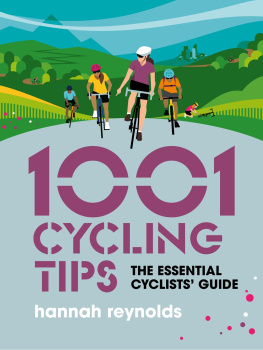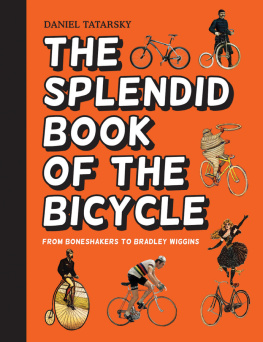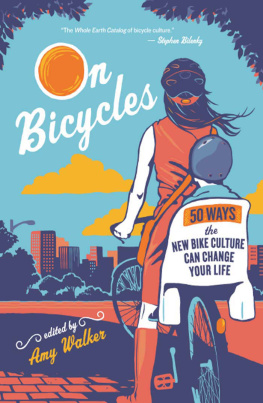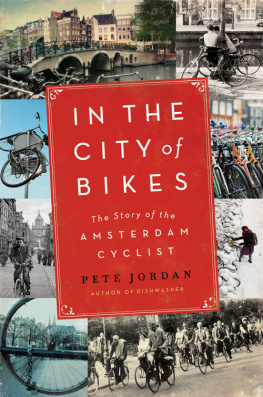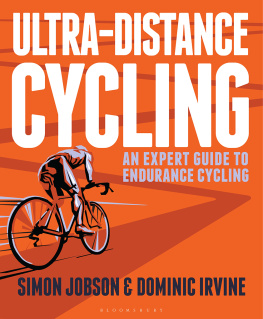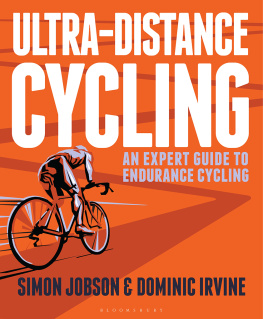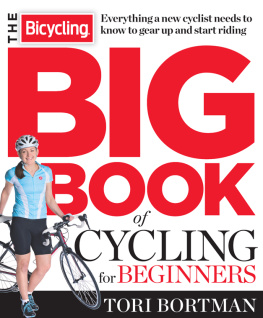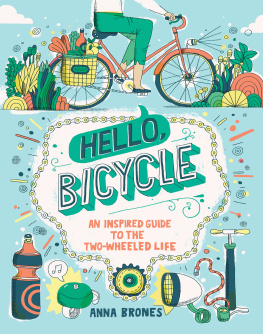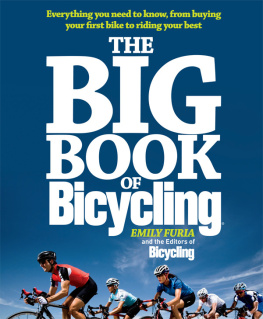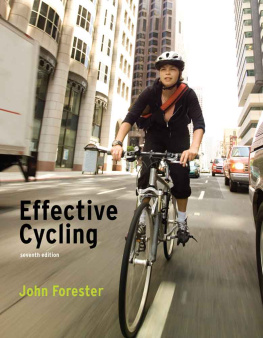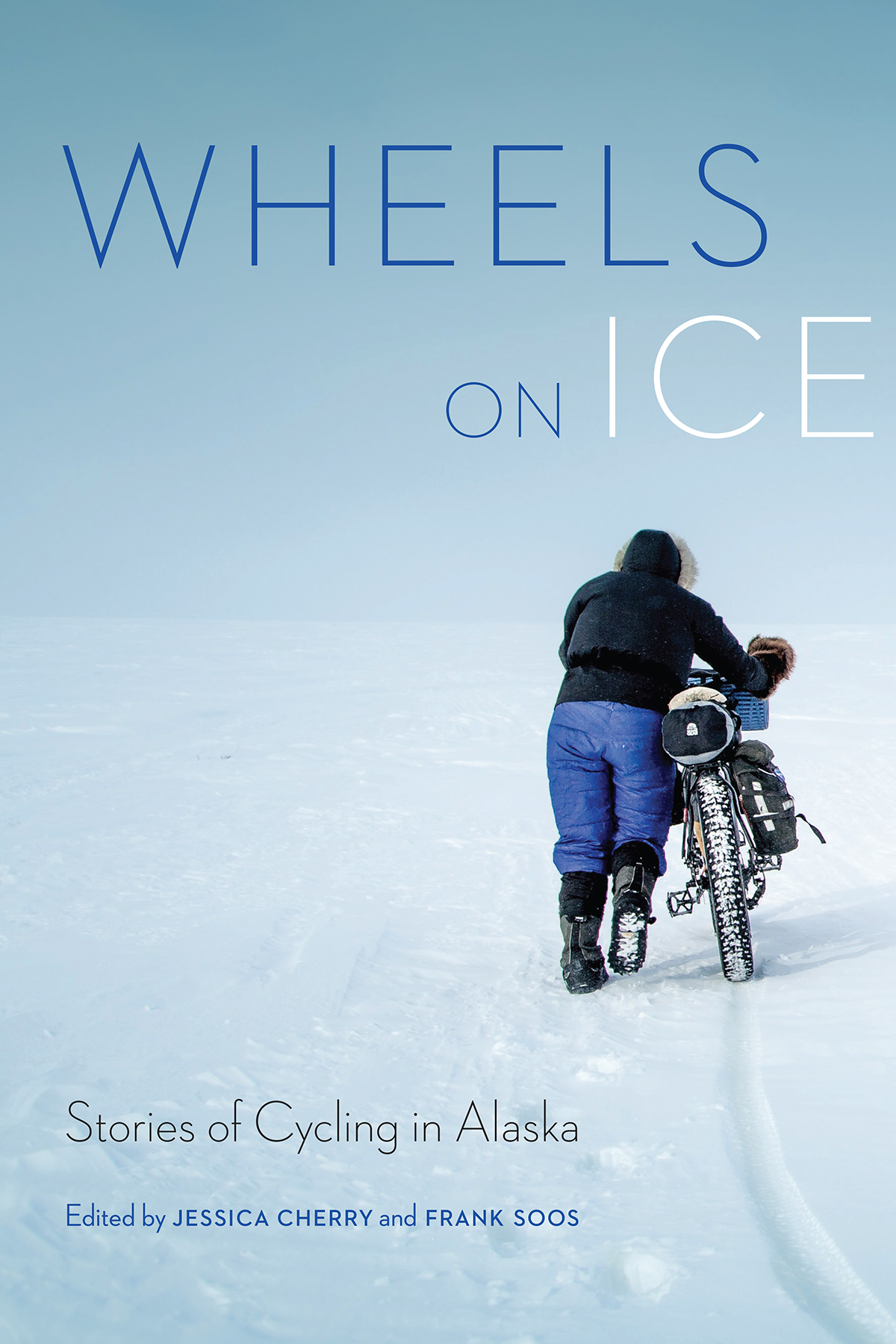
From everyday bike commutes to weeks-long wilderness rides, Alaskans continue to push the pedals and their own limits. This spirited and lively collection will delight hardcore riders, weekend riders, and readers wholl enjoy vicariously these wild adventures on wheels.
Peggy Shumaker, author of Just Breathe Normally
Thrilling!... Readers will experience not only long pedals through the landscapes and wildlife of this most beautiful state but also the personal introspection that only a good ride can inspire. At turns humorous, inspiring, and thought-provoking, and all so beautifully written. Itll make you want to ride, even at forty below.
Daryl Farmer, author of Bicycling beyond the Divide
Wheels on Ice
Stories of Cycling in Alaska
Edited by Jessica Cherry and Frank Soos
University of Nebraska Press | Lincoln
2022 by the Board of Regents of the University of Nebraska
Cover designed by University of Nebraska Press; cover photo Bjrn Olson.
Cherry Author photo Rachel Yung.
Soos Author photo Margo Klass.
Acknowledgments for the use of previously published material appear in , which constitutes an extension of the copyright page.
All rights reserved
The University of Nebraska Press is part of a land-grant institution with campuses and programs on the past, present, and future homelands of the Pawnee, Ponca, Otoe-Missouria, Omaha, Dakota, Lakota, Kaw, Cheyenne, and Arapaho Peoples, as well as those of the relocated Ho-Chunk, Sac and Fox, and Iowa Peoples.
Library of Congress Cataloging-in-Publication Data
Names: Cherry, Jessica, editor. | Soos, Frank, editor.
Title: Wheels on ice: stories of cycling in Alaska / edited by Jessica Cherry and Frank Soos.
Description: Lincoln: University of Nebraska Press, [2022]
Identifiers: LCCN 2022007195
ISBN 9781496232472 (Paperback: acid-free paper)
ISBN 9781496233899 (ePub)
ISBN 9781496233905 ( PDF )
Subjects: LCSH : CyclingAlaskaHistory. | BISAC : SPORTS & RECREATION / Cycling | HISTORY / United States / State & Local / West ( AK , CA , CO , HI , ID , MT , NV , UT , WY )
Classification: LCC GV 1045.5. A 4 W 487 2022 | DDC 796.609798dc23/eng/20220321
LC record available at https://lccn.loc.gov/2022007195
The publisher does not have any control over and does not assume any responsibility for author or third-party websites or their content.
For Terrence Cole (19532020) and
Frank Soos (19502021), who left too soon.
For my uncles Dan ORourke (19452014), Tim Ernst, and Joel Ernst,
who showed me that life on the bike is better.
Jessica Cherry
Contents
Jessica Cherry
Frank Soos
Terrence Cole
Edward R. Jesson
Max Hirschberg
H. B. Levie
Jessica Cherry and Frank Soos
Charlie Kelly
Rocky Reifenstuhl
Gail Koepf
Roman Dial
Dan Buettner
Bill Sherwonit
Michael Finkel
Jessica Cherry
Daniel Smith
Jeff Oatley
Corinna Cook
David A. James
Martha Amore
Don Rearden
Andromeda Romano-Lax
Eric Flanders
Clinton Hodges III
M. C. MoHagani Magnetek
Rachael Kvapil
Alys Culhane
Corrine Leistikow
Jessica Cherry
Bjrn Olson
Eric Troyer
Lael Wilcox
Luc Mehl
Kathleen McCoy
Tom Moran
Earl Peterson
Photographs
Maps
Jessica Cherry
The idea for this book came together when Frank and I learned of our friend and colleague Terrence Coles cancer diagnosis. We both had the idea that Terrences 1985 edited volume, Wheels on Ice: Bicycling in Alaska, 18981908, ought to be reprinted. This book, nearly unobtainable, holds something of a cult status in Alaska. Also published as Wheels on Ice: A Collection of Gold Rush Tales by Men Who Mushed with Bicycles Instead of Dogs as an insert in the Alaska Journal: History and Arts of the North, the original included five stories. Frank and I also agreed that expanding this book to include more recent stories of cycling in Alaska would make for a more compelling and relevant collection.
We worked on the project together from late 2019 through the start of the COVID -19 pandemic; the murder of George Floyd in Minneapolis; the death of Terrence in Fairbanks; the election of Joe Biden and Kamala Harris; the January 6 riot at the U.S. Capitol; the fall of Kabul, Afghanistan, to the Taliban; the rollout of vaccines; the subsequent vaccine resistance; and the death from COVID of nearly seven million people at the time of this writing. Throughout Alaska and everywhere, Frank and I, and everyone else, cherished our biking time as an escape from all of these painful events. Cycling has a way of reducing us back to our childhood innocence, our troubles blown back by the apparent wind of moving forward. Just after the last of our author edits trickled in during August 2021, I received the message that no one ever wants to hear: my friend, mentor, and coeditor Frank had died in a cycling accident.
This wasnt Franks first one-person cycling accident. In fact, in 2015, the night after winter solstice in Interior Alaska, a time when a spooky blue-and-pink veil covers the few short hours that the sun hovers near the horizon, Frank wrote an essay about his mortality in which he recounts a cycling accident from the preceding summer, very similar to the one in which he died. This essay appeared as a blog post for the 49 Writers organization during the period that Frank served as the Alaska State Writer Laureate. About the slow lengthening of the days after solstice, Frank wrote, More light: those were said to be Goethes last words. They neednt be a valediction, though. Instead, lets think of them as a wish for everything that can happen in the coming light.
The first part of this book reproduces three stories from the original volume edited by Terrence Cole. We know from the pictures of Native Alaskans as well as non-Native women and children with bicycles in that era that these stories are not inclusive, but they are what we have right now. There are also language and viewpoints in these stories that modern readers may find offensive. Because this portion of the book is a partial reprint, we are reproducing the stories as they were written by their authors and assembled by Cole.
In the second part of the book, we pick the cycling story back up in the 1980s, as a whole new wave of settlers have come to Alaska, seeking either jobs in the new pipeline economy or to make a life away from it all. Like the culture and landscape of Alaska at that time, cycling also underwent a rapid transformation with the advent of new technology. Most of these pieces are reprints from magazines or newspapers from the 1980s and 1990s.
In the third and final section of the book, we have contemporary essays and stories written by people riding and writing now. These pieces were solicited from cycling interest groups on social media and with old-fashioned posters and by word of mouth. We found pieces in various blogs and online publications and contacted the authors. If we missed someones voice here, we apologize. We encourage everyone who is riding out there today to tell their cycling story.
Frank Soos
Among the many mixed gifts given us by the Industrial Revolution, unquestionably the best was the bicycle. The bicycle. Affordable. Compact. Lightweight. Capable of traveling great and small distances with relative ease. Durable and easily fixable with a few tools.
It took us a while to get here with the bicycle. Apocryphal stories would have Leonardo da Vinci coming up with a design, and it makes sense. He thought of so many ideas, it would take centuries to catch up with and actually execute. But some say the sketch of the bicycle in one of the codices was probably a doodle by a bored monk made centuries later. It wasnt until the early nineteenth century that the velocipede, the running bike or hobby horseno pedals, no sprocket chain, simply two wheels with a saddle between for the rider-runnercame along. It took a German inventor in the 1850s to come up with a bicycle with pedals. But this bike and its immediate descendants all had direct drive, culminating with the penny-farthing design. The penny-farthing was a challenge to ride and a dangerous designat best it would remain a novelty and not a serious way to travel.
Next page

